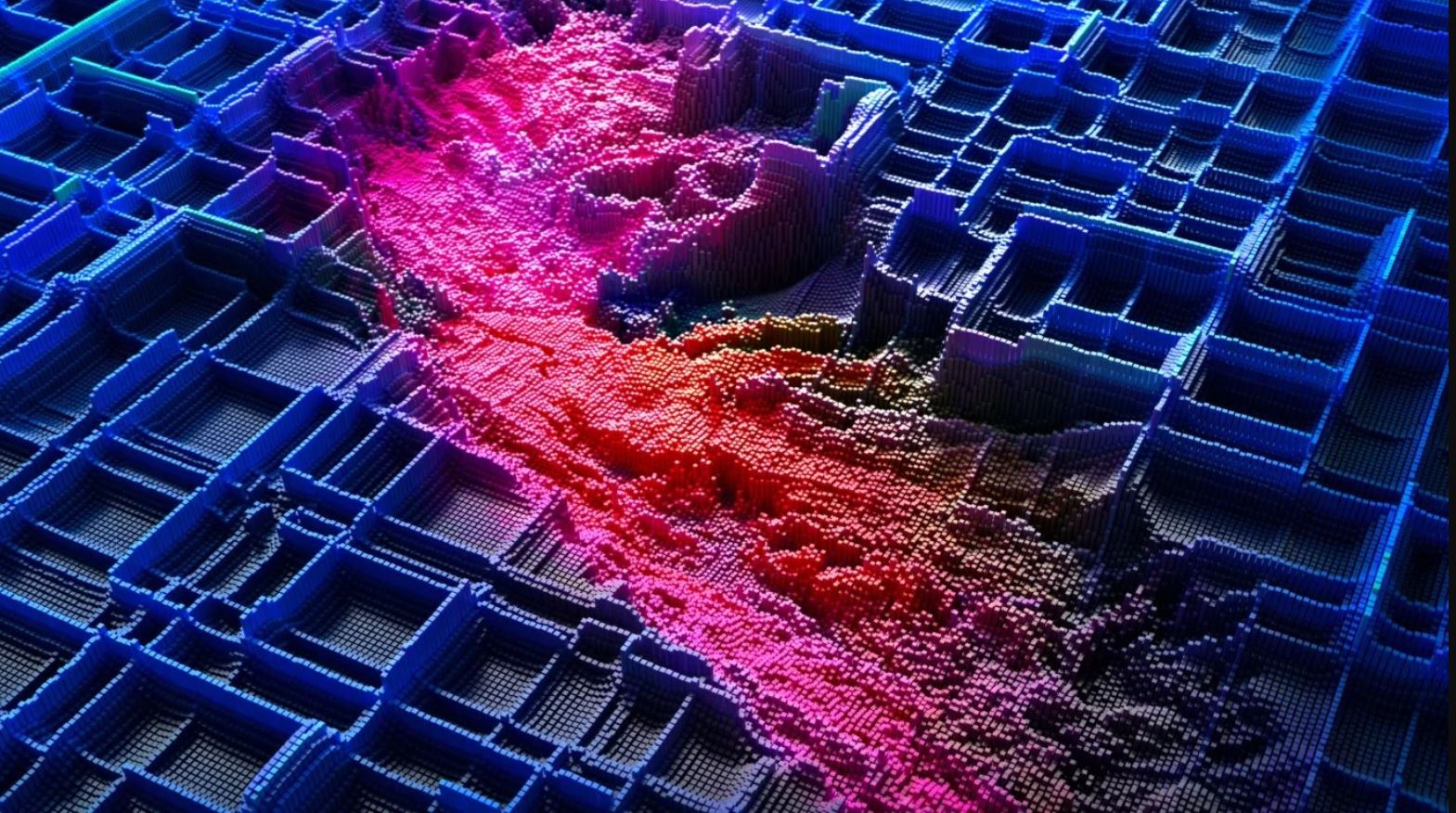
What is data destruction and why is it important?
Data destruction is the process of permanently erasing digital information from storage devices to prevent unauthorised access, data breaches, or cyberattacks. Unlike simple file deletion or formatting, which leaves data vulnerable to recovery, secure data destruction guarantees complete and irreversible removal.
As businesses generate and store increasing volumes of sensitive information, including personal data, financial records, and intellectual property, the need for robust data destruction methods has never been more critical.
The risks of inadequate data disposal include:
Data breaches
Malicious actors can recover improperly erased data and use it for fraud or cyberattacks.

Regulatory non-compliance
Regulations like GDPR impose strict data protection requirements, with severe penalties for non-compliance.

Reputational damage
A security incident resulting from improper data disposal can erode customer trust and impact business operations.

To relieve these risks, businesses must implement data destruction best practices. Partnering with an accredited IT asset disposal (ITAD) provider like Restore Technology means data is destroyed in compliance with industry regulations, minimising exposure to security threats.
How does data destruction help ensure GDPR compliance?
The General Data Protection Regulation (GDPR) mandates that organisations implement appropriate measures to safeguard personal data throughout its lifecycle, including its secure disposal.
Key GDPR principles relevant to data destruction include:
Data minimisation
Businesses should not retain personal data longer than necessary.

Integrity and confidentiality
Organisations must hold themselves responsible for secure data processing, storage, and deletion.

Right to erasure (‘Right to be Forgotten’)
Individuals have the right to request permanent deletion of their data.

Failure to securely dispose of personal data can lead to GDPR violations, resulting in fines of up to €20 million or 4% of annual global turnover, whichever is higher.

Real-world example: GDPR data breach due to poor disposal
In June 2019, Cork University Maternity Hospital (CUMH) was fined €65,000 after the personal data of 78 patients, including sensitive health information, was found in a public recycling facility. The breach violated GDPR Articles 5 and 32 due to inadequate security measures for handling hardcopy documents. While it is unclear how the documents were improperly disposed of, the hospital was deemed responsible as the data controller.
This case underscores why businesses must partner with certified data destruction providers like Restore Technology to prevent costly regulatory breaches.
Read moreWhat are the main regulations and standards related to data destruction?
Data destruction is not just a security concern, it is a legal and regulatory necessity. Various international and national standards dictate how businesses should handle, store, and dispose of data securely to prevent unauthorised access, data breaches, and non-compliance penalties.
Below are the key data destruction regulations and industry standards, along with their implications for businesses.

The General Data Protection Regulation (GDPR) is one of the most stringent data protection laws in the world, applying to businesses that process the personal data of individuals within the European Union (EU) and the UK. Under Article 5 of GDPR, organisations must confirm personal data is:
- Processed securely to protect against accidental loss or unauthorised access.
- Not retained longer than necessary, requiring businesses to securely delete outdated or redundant data.
- Permanently erased upon request under the ‘Right to Be Forgotten’ (Article 17).

ISO 27001 is a globally recognised information security management standard (ISMS) that provides a framework for managing sensitive information securely, including the handling and disposal of data. Under ISO 27001, organisations must:
- Implement strict security measures for handling, storing, and destroying sensitive data.
- Adopt risk-based approaches to IT asset disposal to prevent unauthorised access to residual data.
- Maintain audit trails proving that data has been securely erased or destroyed.
ISO 27001 and IT asset disposal
Certified IT asset disposal (ITAD) providers like Restore Technology help businesses maintain ISO 27001 compliance by offering secure transportation, certified destruction, and full reporting for audit purposes.

The National Cyber Security Centre (NCSC), part of the UK government, issues best practice guidelines on secure data destruction for businesses, public sector organisations, and government bodies.
Key NCSC recommendations include:
- Avoid reliance on software wiping alone, as data may still be recoverable.
- Use certified ITAD providers for the physical destruction of data storage devices.
- Verify destruction methods through audit reports and certificates of destruction.
Restore Technology follows NCSC guidelines, ensuring secure destruction of IT assets for businesses across various industries, including healthcare, finance, and government sectors.

The PCI DSS standard applies to businesses handling payment card data, including retailers, e-commerce platforms, and financial institutions. PCI DSS mandates that businesses:
- Securely dispose of expired or redundant cardholder data to prevent fraud.
- Use certified destruction methods for IT assets storing payment information.
- Document and audit all data destruction activities to prove compliance.
Failure to comply can result in severe penalties, reputational damage, and loss of the ability to process card payments. By working with Restore Technology, businesses can remain compliant with PCI DSS by securely shredding and disposing of storage media containing financial data.

The WEEE directive governs the responsible disposal of electronic waste (e-waste) within the UK and EU. It requires businesses to:
- Recycle or properly dispose of IT equipment rather than sending it to landfill.
- Use environmentally responsible ITAD providers to certify compliance.
- Track and document the IT asset disposal processes to prove responsible handling.
How Restore Technology ensures regulatory compliance
Restore Technology strictly adheres to GDPR, ISO 27001, PCI DSS, NIST 800-88, DoD 5220.22-M, and WEEE regulations, providing businesses with certified shredding with full documentation and audit trails for compliance purposes. By following these stringent regulations and standards, Restore Technology guarantees secure, compliant, and environmentally responsible data destruction.
Who is responsible for the destruction of data when disposing of IT assets?
Secure data destruction, for the most part, is often a shared responsibility within an organisation. However, a certain person in each department must be given final accountability. Following best practices is crucial to preventing data breaches, regulatory violations, and reputational damage when disposing of end-of-life IT assets.
IT and security teams – Internal responsibility: Who handles data destruction?
The IT and cybersecurity departments play a crucial role in overseeing the secure disposal of IT assets. Their responsibilities include:
Identifying devices that contain sensitive data
This includes hard drives, SSDs, mobile devices, laptops, and servers.

Determining the appropriate destruction method
Whether through software wiping, degaussing, shredding, or physical destruction, IT teams must choose a method that guarantees complete data eradication.

Coordinating secure storage before disposal
Devices pending destruction must be securely stored to prevent theft or tampering.

Implementing security controls
This includes encryption, restricted access, and monitoring to prevent the unauthorised handling of decommissioned devices.

Legal and regulatory requirements
GDPR
Securely destroying personal data when no longer needed.

ISO 27001 (Information Security Management)
Implementing data destruction procedures that align with global security standards.

PCI DSS (Payment Card Industry Data Security Standard)
Managing the secure destruction of payment card data to prevent fraud.

Maintaining audit trails and compliance records
Ensuring proof of destruction through official reports and certificates.

Outsourced responsibility: Choosing a certified ITAD provider
Given the complexity and risks of handling sensitive data, many businesses choose to work with a certified IT Asset Disposal (ITAD) provider like Restore Technology to maintain the highest levels of security and compliance.
Outsourcing IT asset disposal to a trusted provider means:
Secure collection and transport
IT assets are collected in GPS-tracked, tamper-proof containers to prevent data leaks.

Certified onsite or offsite data destruction
Devices are either shredded, degaussed, or crushed at the business premises or in a secure, accredited destruction facility.

Compliance with industry regulations
Providers like Restore Technology meet ISO 27001, GDPR, PCI DSS, and NIST 800-88 standards.

Audit reports and certificates of destruction
Businesses receive official proof of data destruction, which can be used for compliance audits and security assessments.

A step-by-step overview of data destruction examples, techniques and procedures
Data destruction is a multi-step process that requires careful planning, execution, and documentation so that sensitive information is completely irretrievable. Different types of data destruction techniques are used depending on the type of storage device, security requirements, and compliance obligations. Below is a detailed breakdown of the most effective data destruction methods.
1. Data wiping (Software-based sanitisation)
Data wiping is a software-based approach that overwrites existing data with random characters multiple times, making the original information unrecoverable.
How it works:
Specialised software such as Blancco, DBAN, or Certus Erasure is used to overwrite each sector of the storage device. The process means that previous data cannot be retrieved using forensic recovery tools. Data wiping allows for the reuse or resale of devices after sanitisation, making it a more sustainable option than physical destruction.
Limitations:
- Ineffective for failing or physically damaged drives: If a hard drive is malfunctioning or unreadable, software wiping may not be possible.
- Time-consuming: Depending on the storage size, wiping can take several hours to complete.
- Not applicable for SSDs: Modern SSDs use wear-leveling technology, making it difficult to ensure complete overwriting.
2. Degaussing (Magnetic data erasure)
Degaussing is a process that uses high-powered magnetic fields to disrupt the magnetic structure of storage media, effectively erasing data.
How it works:
A degausser generates an intense electromagnetic pulse that neutralises the magnetic charges on a storage device. This process makes data completely unreadable and irrecoverable.
Limitations:
- Ineffective for SSDs and flash storage: Unlike traditional hard drives and tapes, SSDs do not store data magnetically, making degaussing ineffective.
- The device becomes unusable: Once degaussed, the storage device cannot be reused or repurposed.
Degaussing is primarily used for legacy IT equipment, such as magnetic hard drives, floppy disks, and backup tapes. However, it should always be followed by physical destruction for maximum security.
3. Hard drive and SSD shredding
Hard drive shredding is the gold standard for secure data destruction, as it guarantees that no data can ever be recovered from a destroyed device.
How it works:
Industrial shredders grind hard drives and SSDs into tiny metal fragments. The resulting pieces are so small that data recovery is physically impossible.
Why shredding is the most secure method:
- It meets compliance standards for GDPR, ISO 27001, and NIST 800-88.
- It’s suitable for all storage devices, including SSDs, HDDs, and flash drives.
- The shredded material can be recycled under e-waste management programs.
Restore Technology offers industrial-grade sustainable shredding services that guarantee compliance with data protection laws and industry regulations.
4. Crushing and punching
Crushing and punching involve the physical deformation of hard drives using hydraulic crushers or steel punches.
How it works:
A hydraulic press crushes or punches a hole through the drive platters, rendering them unreadable. The damage prevents any type of data reconstruction, making it a quick and effective destruction method.
Best use cases:
- For on-site destruction in highly secure environments such as government agencies, defence contractors, and financial institutions.
- For organisations needing immediate destruction before transporting IT assets to an offsite disposal facility.
5. Physical destruction of mobile devices, laptops and servers
Many businesses overlook the security risks associated with mobile devices, assuming that deleting files or performing a factory reset is enough. However, modern forensic techniques can still recover sensitive data. Here are some of the reasons why secure destruction is a fundamental requirement for mobile devices, laptops and servers.
Phones and tablets store vast amounts of personal and corporate data, including emails, banking details, and login credentials.
- Laptops and desktops contain confidential business information, customer records, and intellectual property.
- Servers store mission-critical data and often have redundant backups that require thorough destruction.
How Restore Technology guarantees complete destruction
Secure dismantling
Devices are disassembled and critical components (such as memory chips and hard drives) are destroyed.

Crushing, shredding, or incineration
No data can ever be retrieved from the devices.

6. Secure collection and transportation of IT assets
Ensuring data security during transport is just as important as the destruction process itself, ensuring that sensitive data remains protected from collection to final destruction.
Restore Technology’s Secure Transport Process:
GPS-tracked vehicles
All IT assets are transported in vehicles equipped with real-time tracking.

Tamper-proof containers
Devices are securely locked in sealed containers to prevent unauthorised access.

Full chain of custody documentation
Every step of the process is recorded and monitored for compliance and accountability.

7. Certification and reporting
Regulatory compliance requires detailed documentation of data destruction processes.
Why businesses need certified proof of destruction:
Legal protection
Demonstrates adherence to GDPR, ISO 27001, and PCI DSS regulations.

Audit trails
Ensures compliance with data protection authorities and internal security policies.

Peace of mind
Guarantees that all data has been securely destroyed with no risk of recovery.

Best practice tips for creating a secure data destruction policy
A robust destruction of data policy is essential for businesses handling sensitive or confidential information. A well-structured policy protects data from breaches, helps with regulatory compliance, and minimises the risk of financial penalties or reputational damage. Below are the best practices to follow when developing a secure and legally compliant data destruction policy.
1. Assess your data risk and compliance requirements
Before implementing a confidential data destruction policy businesses must evaluate their data security risks and understand regulatory obligations. This involves:
Identifying sensitive data categories, determine what types of data are stored on IT assets, including:
- Personally Identifiable Information (PII) (names, addresses, financial records).
- Payment Card Information (covered under PCI DSS regulations).
- Intellectual Property and Trade Secrets (confidential business data).
Determining legal and compliance obligations:
GDPR (General Data Protection Regulation)
This applies to businesses handling EU/UK customer data.

ISO 27001 (Information Security Standard)
Global security framework for IT asset disposal.

PCI DSS (Payment Card Industry Data Security Standard)
Regulates secure disposal of cardholder data.

Understanding retention periods
Organisations should specify how long data should be retained before it must be securely deleted to comply with legal mandates and business policies.

2. Define roles and responsibilities
A successful data destruction policy requires roles to be clearly delegated within the organisation so that businesses can prevent security lapses and data mishandling by defining responsibilities upfront:
Roles and responsibilities:
IT Security Officers and Data Protection Managers
Oversee IT asset disposal so that all processes align with security policies and compliance requirements.

Compliance and Legal Teams
Check that data destruction aligns with GDPR, ISO 27001, PCI DSS, and other regulatory data destruction standards.

Third-Party IT Asset Disposal (ITAD) providers
Partnering with a certified ITAD provider like Restore Technology confirms secure and compliant destruction of IT assets.

3. Implement a clear IT asset disposal process
Establishing a systematic IT asset disposal process means data is securely destroyed and not left vulnerable on decommissioned devices. Key steps include:
Developing a device lifecycle management plan: This plan should specify when and how devices should be decommissioned, wiped, or physically destroyed.
Defining approved destruction methods:
- Businesses should follow industry standards such as:
- Shredding for hard drives and SSDs so that data is irrecoverable.
- Degaussing for magnetic media (tapes, HDDs) before disposal.
- Software-based wiping for reusable devices for complete sanitisation.
Ensuring secure chain of custody: IT assets must be tracked from removal to final destruction to prevent theft, loss, or unauthorised access. Restore Technology offers GPS-tracked, tamper-proof collection and transport services to check security at every stage.
Regulatory compliance activities:
Recording asset disposals
Maintain an IT asset register tracking the movement, destruction method, and verification of disposed devices.

Obtaining certificates of destruction
These documents provide legal proof that data has been permanently destroyed. Restore Technology issues fully certified destruction reports to support compliance audits.

Conducting periodic audits
Businesses should conduct internal audits or work with a certified ITAD provider to verify compliance with data protection laws.

4. Train employees on secure data disposal
Even the best policies can fail if employees are not properly trained. A data destruction policy should include ongoing staff training to prevent human error in IT asset disposal.
Raising awareness about security risks: Employees should understand the dangers of improper disposal, such as:
- Data breaches from discarded hard drives and USBs.
- Reputational damage from leaked customer data.
- Regulatory fines for non-compliance.
Providing clear data protection guidelines for data handling: Staff should be trained to:
- Recognise when devices require secure disposal.
- Follow approved disposal procedures.
- Report lost or improperly handled IT assets.
Incorporating data destruction guidelines training into security policies: Employee onboarding and cybersecurity awareness programs should include data disposal best practices to confirm organisation-wide compliance.
5. Choose a trusted ITAD partner
Outsourcing IT asset disposal to a certified IT Asset Disposal provider reduces security risks so you can feel assured that you remain fully compliant with data protection laws.
Why work with an ITAD partner?
Expertise in secure disposal
Certified providers use industry-approved destruction methods (shredding, degaussing, crushing).

Regulatory compliance
ITAD providers follow ISO 27001, GDPR, and PCI DSS data security standards.

Environmental responsibility
IT assets are recycled or disposed of in accordance with the WEEE Directive.

Secure data destruction from Restore Technology
Data destruction is a critical component of cybersecurity and regulatory compliance. Improper disposal of IT assets can lead to data breaches, financial penalties, and reputational damage. By implementing best practices and working with a trusted ITAD provider like Restore Technology, businesses can eliminate risks and remain fully compliant with data protection laws.
Get in Touch